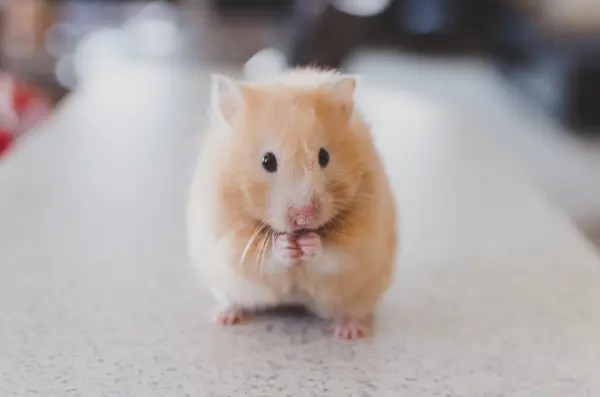A recent multi-university study involving Stanford researchers found that the presence of the oxytocin hormone receptor is not needed for prairie voles to exhibit social attachment behavior, a species of rodent known to mate for life.
Oxytocin, commonly dubbed the “love hormone,” was thought to play a role in the formation of “social attachment between sexual partners.” Both a hormone and neurotransmitter, oxytocin is a small molecule of paramount importance in clinical settings, with applications such as inducing labor, according to Nirao Shah, senior author of the study and professor of psychiatry and behavioral sciences and of neurobiology.
In the study’s report, the authors wrote that the findings could “permit us to test directly the impact of such genetic disruptions in the context of complex social and attachment behaviors.”
These findings may eventually be translated to patients with disorders on the autism and schizophrenia spectrum.
“It’s thought that oxytocin may be playing a role in mediating trust-type behaviors,” Shah said. “These bonding trusting behaviors might be disrupted in clinical conditions like autism spectrum disorder and schizophrenia.”
To evaluate the significance of oxytocin signaling, the researchers used CRISPR gene editing technology to mutate oxytocin receptors from prairie voles and studied changes in their social and mating habits.
Unlike mice, prairie voles seem to be a poster child species for social monogamy. In neuroscience research, social monogamy is referred to as “social attachment” or “pair-bonding behavior” with one sexual partner, according to Shah. He added that “unlike most other mammals, after mating, prairie voles bond for life.”
Like many humans, they tend to be involved with one mate at a time. Humans, however, are typically referred to as being “serially monogamous,” according to Shah, given the tendency to move on to another partner after the conclusion of a partnership.
But again, like humans, it is not shocking to observe infidelity among voles. “They will occasionally cheat, but for the most part, they’re still hanging out with each other,” Shah said.
Despite the mutation of the oxytocin receptors, the voles maintained their socially monogamous behavior and apparent love for their families. This suggested that oxytocin does not hold as eminent a role in social attachment as previously thought.
“To our surprise, we found that Oxtr mutant [mutated] voles can still display normal social attachment to their partners, like their wild-type siblings,” wrote Yichao Wei, Ph.D., a postdoctoral scholar in psychiatry. “Moreover, the Oxtr mutant males and females displayed normal parent[al] care to their young.”
The research began in 2009, and has since faced a handful of challenges. The researchers had to breed a sufficiently-sized lab vole population and craft protocols for handling vole subjects, which are not commonly used in laboratory settings.
“One of the major phases was just establishing our colony,” said Maricruz Alvarado Mandujano, a Life Science Research Professional at the Shah Lab. “It took a while for us to stabilize the routine of mating and what conditions the voles like,” she said.
According to Alvarado Mandujano, prairie voles have around the same gestation period of mice — three weeks — but produce smaller litters.
Voles are chosen over typical lab mice, which are known for being “sort of promiscuous,” making them “great for breeding […] big colonies” but difficult for “study[ing] these small complicated [social attachment] behaviors,” Shah said.
The researchers wanted to eliminate oxytocin receptors in the voles, so they needed a way to edit the vole embryos’ genomes. They began with less efficient gene-editing techniques, which prolonged the study’s duration. Later on, they employed CRISPR-Cas9, a more efficient process that was discovered in 2012, to mutate the DNA that encodes these receptors.
Interacting with the voles presented its own set of handling challenges. “Initially, they [could] be sort of frisky” as they were retrieved from their enclosures, said Shah. According to him, the voles trusted the researchers over time.
The especially rambunctious voles got added to the lab’s de facto watch list. “We put a tape on the cage and say, ‘it’s a jumper,’” Mandujano said.
Another Valentine’s Day has come and gone, so what can humans learn from this study?
In humans, “the clinical trials have not been as clear-cut” when evaluating oxytocin’s impact on social-behavioral problems, “so there’s already some doubt about [its] utility,” Shah said. Social attachment may also be regulated by a related hormone called vasopressin, Shah wrote.
At least in prairie voles, love may still be in the air, oxytocin or not.
